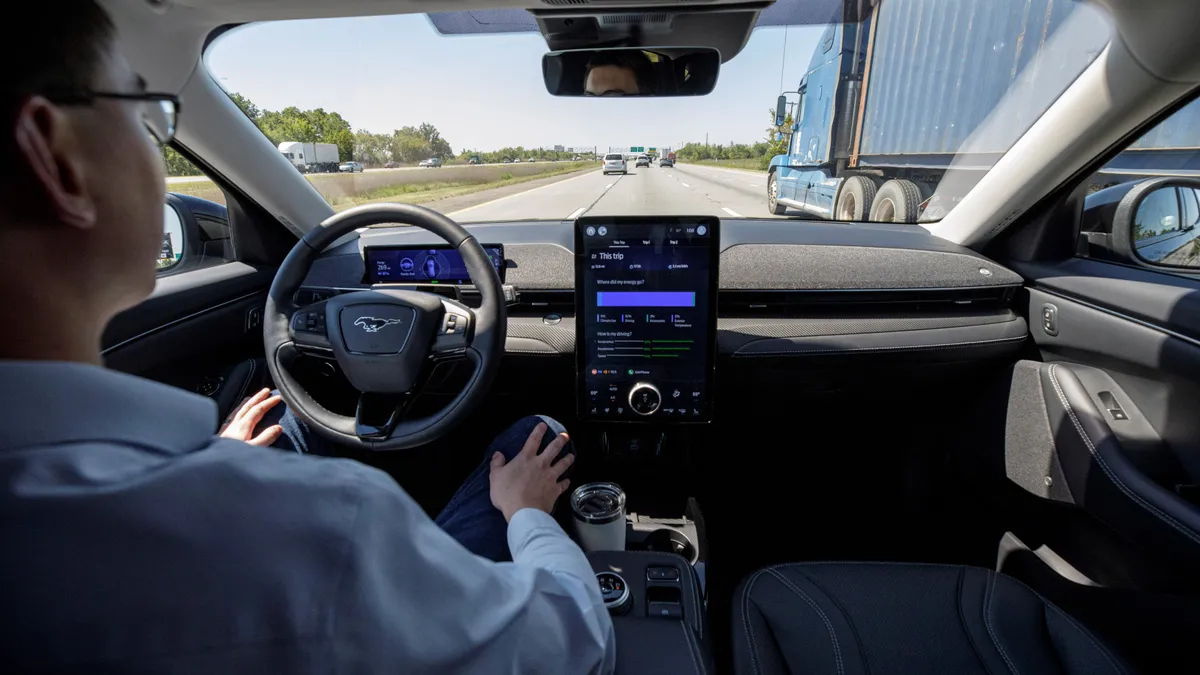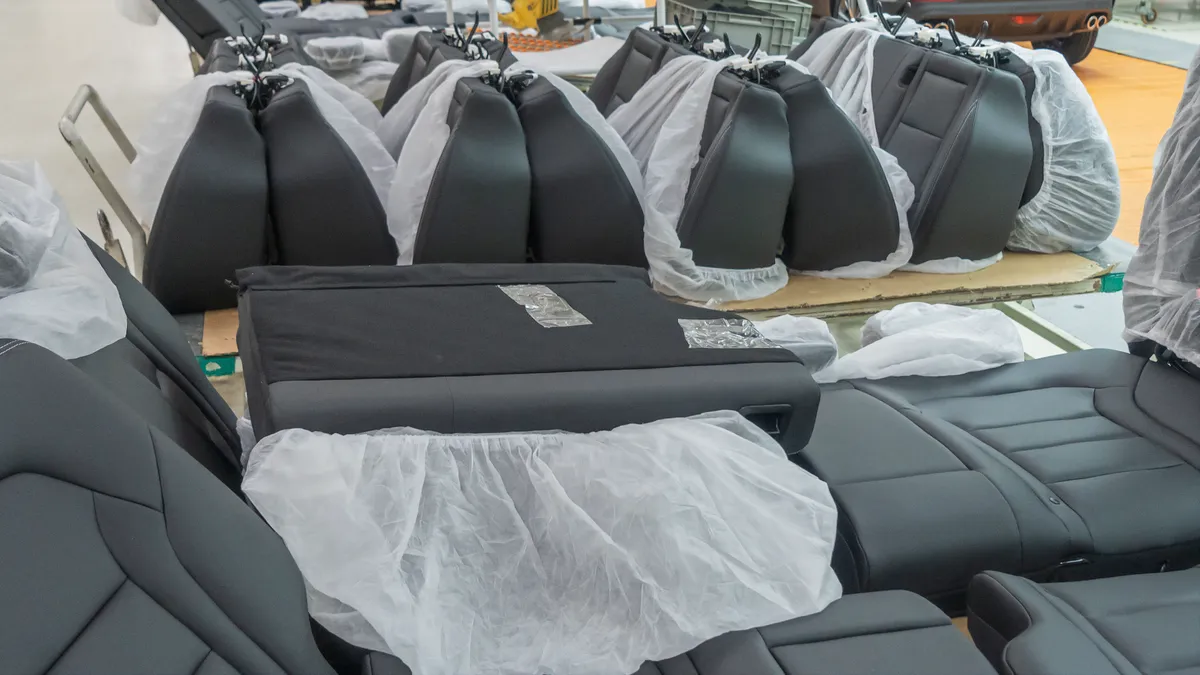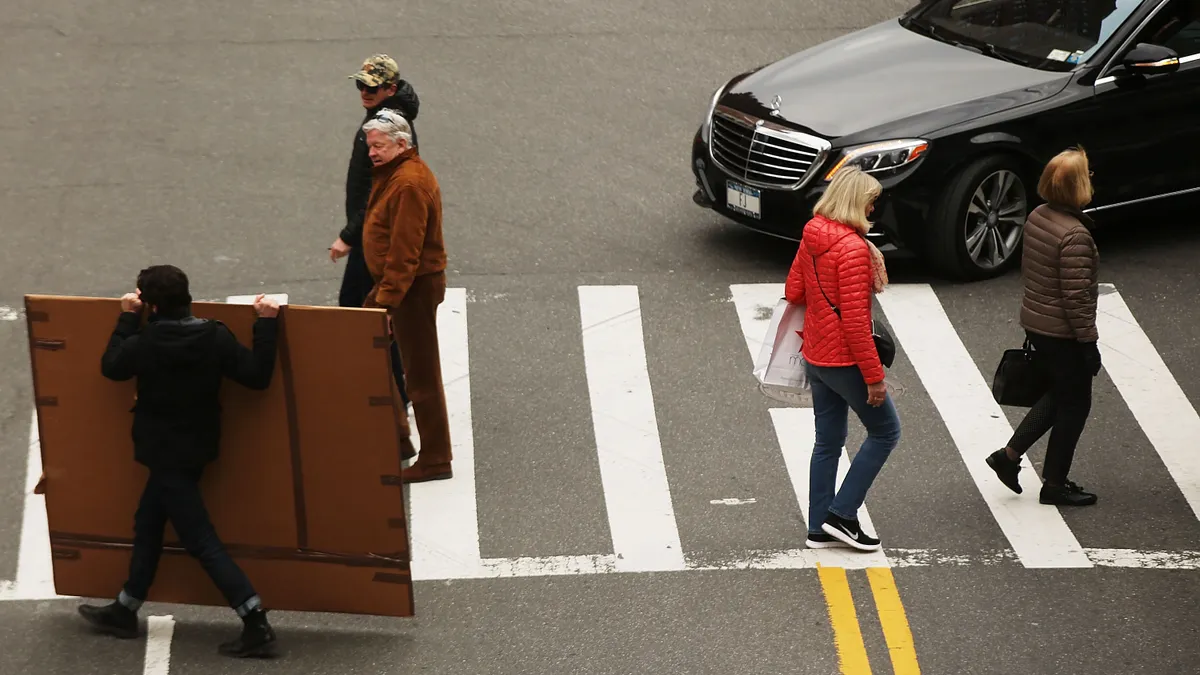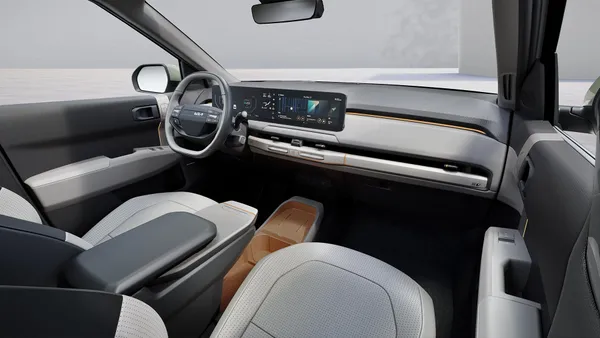Dive Brief:
- The National Highway Traffic Safety Administration has opened two separate investigations of Ford Motor Co. and Tesla over the safety of their automated driving systems.
- The NHTSA investigation of Ford’s BlueCruise hands-free highway driving feature follows two incidents where a Mustang Mach-E collided with a stationary vehicle. Its initial probe found that BlueCruise was active immediately prior to both collisions.
- For the Tesla investigation, the NHTSA is looking into whether the automaker’s December recall and subsequent software update for around 2 million vehicles equipped with Autosteer was adequate enough to address all of the agency's safety concerns.
Dive Insight:
The safety of autonomous driving systems and their use on public roads has been under additional scrutiny since last October after an autonomous taxi operated by General Motors’ unit Cruise struck and seriously injured a pedestrian in San Francisco.
Tesla’s December recall, the largest in the company’s history, included all vehicles equipped with Autosteer built from Oct. 5, 2012 through Dec. 7, 2023.
Tesla completed its December recall to address concerns that drivers could misuse its automated driving feature. The software update included adding “additional controls and alerts” to prompt drivers to better supervise the system when it’s active, such as providing warnings to drivers to keep their hands on the steering wheel and eyes on the road.
The NHTSA is looking into why Tesla deployed “non-remedy” software updates for issues that appear to be related to the ODI’s concerns that led to the recall in December. The NHTSA is looking into Tesla's deployment of "non-remedy" software updates, which seem related to the concerns prompting the December recall, and the omission of these updates from previous software releases, questioning whether they were meant to address safety risks.
The NHTSA’s Office of Defects Investigation identified concerns “due to post-remedy crash events and results from preliminary NHTSA tests of remedied vehicles.” The report also includes that Tesla stated that a portion of the software fix “requires the owner to opt in and allows a driver to readily reverse it.”
The ODI identified at least 13 Tesla crashes since June 2022 involving one or more fatalities and many others involving serious injuries. It concluded that driver misuse of Autopilot played an apparent role in these crashes.
The NHTSA is looking into why Tesla deployed “non-remedy” software updates for issues that appear to be related to the ODI’s concerns that led to the recall in December. The NHTSA is also looking into why these updates were not included in Tesla's previous software update, or if they were intended to address “a defect that poses an unreasonable safety risk.”
Tesla’s automated driving features have been blamed for over 700 accidents and 17 fatalities since 2019. In February 2023, the company recalled 362,000 vehicles to update Full Self-Driving Beta software, Reuters reported.
The NHTSA investigation of Ford’s BlueCruise hands-free highway driving feature follows two separate crashes involving the Mustang Mach-E equipped with the feature. The probe covers 2021-2024 Mach-E vehicles.
The BlueCruise investigation comes after the ODI was notified of two incidents where a Mustang Mach-E collided with a non-moving vehicle, which the report says “were located within the travel lanes of controlled-access highways.” Both incidents occurred at night and each resulted in at least one fatality.
Ford’s BlueCruise was introduced in 2021 and can only be used on certain mapped highways in the U.S. Like Tesla’s Autopilot, its sensor suite also includes a camera-based driver monitoring system to determine driver attentiveness. The NHTSA investigation of BlueCruise will evaluate the performance and safety of the system, as well as its driver monitoring function.












